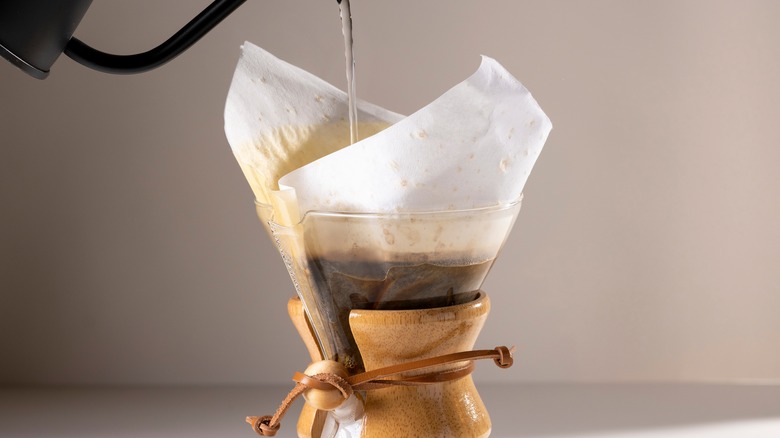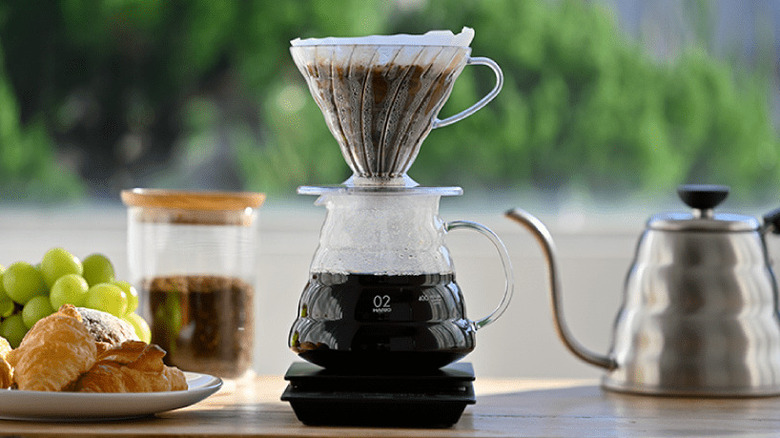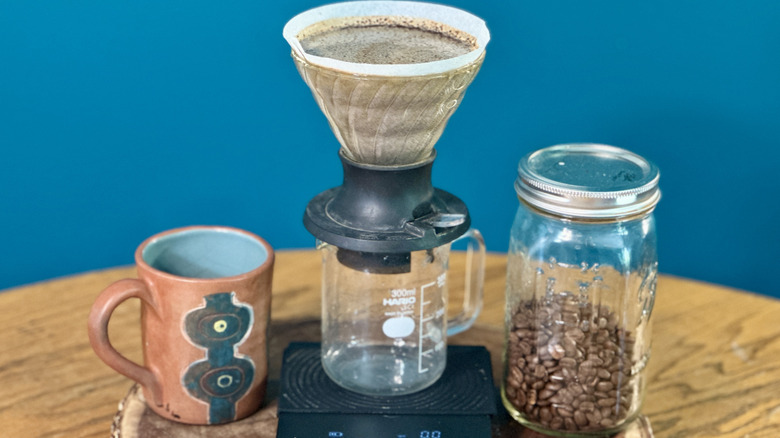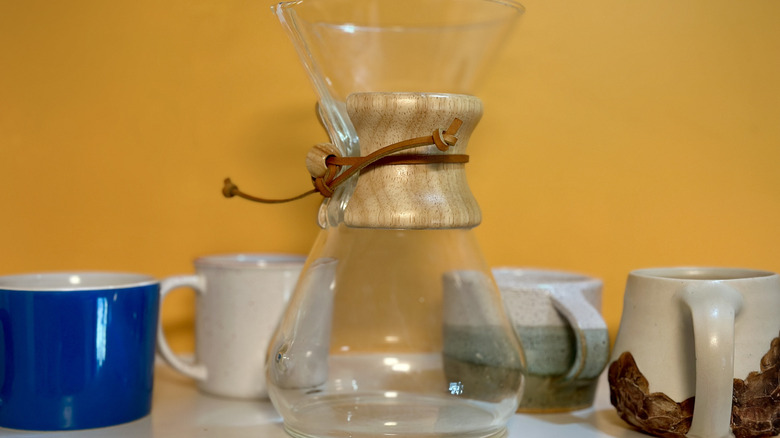4 Budget Pour-Over Coffee Makers That Deserve A Spot On Your Countertop
We may receive a commission on purchases made from links.
Pour-over coffee has grown in popularity with the rise of third-wave brew. Gone are the days of Folgers dominating the coffee aisle. Now, roasters are developing more complex, light-roast beans, and coffee producers are using new processes (like co-fermentation) that create more interesting flavors. At-home brewers want more control over the coffee they make with these high-end beans, so it makes sense that fewer people are using traditional drip coffee makers in the morning.
If you're looking for a new coffee maker, pour-overs are a great option. As stated in our guide to why pour-overs are so popular and how to make them, you can make your coffee per cup and extract more from your beans than is possible in a standard drip coffee maker. Their simplicity is a plus — most of them you can set on top of your mug with a paper filter full of ground coffee and start pouring your hot water. Compared to most machine coffee makers, you can make sure as you pour that the hot water evenly goes over all your coffee so there's less bitterness. Upgrades like a separate pot for the coffee to flow into, a gooseneck kettle for better control of your pour, a scale for more exact measurements, and a burr grinder for a fresh, more even grind are nice to have, but not necessary. They also look good in your kitchen. Here's our roundup of pour-over coffee makers that don't take up too much space, look nice on your countertop, and don't break the bank.
Hario V60
The Hario V60 is a classic piece of Japanese-made equipment that you'll see at many specialty coffee shops. The internet is full of V60 brewing methods for a reason: It provides you the most control over how your morning coffee will taste, allowing you to highlight all the different flavors that can come through in your coffee. Coffees tend to have a clear, structured quality and thinner mouthfeel with this piece of equipment. The angle of the walls, the large hole at the bottom, and the inner ridges allowing a flow of air all mean the hot water doesn't sit in the grounds for long. Hot water extracts more coffee than water that has already extracted coffee. A ceramic V60 will cost around $30, while a plastic one can be found for around $12.
Kalita Wave
Another Japanese-made coffee brewer, the Kalita Wave, is one of the early flat-bottom brewers. They come in steel, glass, and ceramic, and have 2 sizes: the 155 for making a solo cup, and the 185 for a bigger batch of coffee. The other big difference is that they have 3 holes at the bottom instead of 1. The sleek-looking design lends itself to a more forgiving process and a more consistent and cleaner cup, since the water and coffee are evenly distributed through spending more time together at the bottom of the flat brewer compared to the fast-flowing V60. Flat bottom brewers tend to mute acidic citrusy and berry notes in light roasts, but bring out chocolatey flavors in darker roasts, so it's not always a one-size-fits-all type of situation. The larger, metal Kalita wave will cost around $40, while you can get a smaller, glass version for about $20.
Hario Switch
The Hario Switch is a newer take on the classic V60. Dubbed a hybrid method of making coffee, the Switch is a V60 with a metal ball that will plug up the bottom, allowing for immersion brewing with the clarity that comes from the V60. There are many ways to use it, from keeping the bottom closed for several minutes to make a rich and clean cup, to opening and closing throughout the process to bring different tasting notes forward. And if you want, you can always just leave it open and use it as a standard V60. Depending on the size, a Hario Switch will run you around $30 to $40.
Chemex
Created in Germany in 1941, where pour-over coffee was first invented, the Chemex is considered such a beautiful work of art it's on display at the MoMA in New York. Its thicker filters make clean cups with less coffee oil making its way through. It's the perfect pour-over to use if you're making a large batch of coffee in the morning. You do have to be careful that the filter doesn't collapse into the pouring spout, as the lack of air getting in and out will slow down your brew time, making the cup more bitter. Chemex makers come in many sizes, ranging from a small, 3-cup maker for around $40 to a large 10-cup maker for about $50.
Once you get one of these beautiful pour-over makers, you're well on your way to making the perfect coffee every morning. The next step is choosing the right coffee beans — take a look at our beginner's guide to get started.




